#les contes d'hoffmann by offenbach
Explore tagged Tumblr posts
Text























Supernatural (s1-5) & The Sandman by E. T. A. Hoffmann
#supernatural#the sandman#comparatives#der sandmann#ernst theodor amadeus hoffmann#translation by John Oxenford#translation by J. T. Bealby#les contes d'hoffmann by offenbach#the tales of hoffmann 1951#spn 1x22 & 2x01 & 2x10 & 2x21 & 4x06 & 4x09 & 4x22 & 5x22#sam winchester#john winchester#azazel#ruby#((i think i should have stopped the post after yed!john but i couldn't help myself))
18 notes
·
View notes
Text

Random youtuber's reaction to the Violin Aria
#Les contes d'Hoffmann#the tales of hoffmann#still not my favorite production#poor Niklausse deserves so much better#but anyway#i thought this comment was funny#opera#opera tag#Jaques Offenbach#Jules Barbier#Michael Carré
21 notes
·
View notes
Text
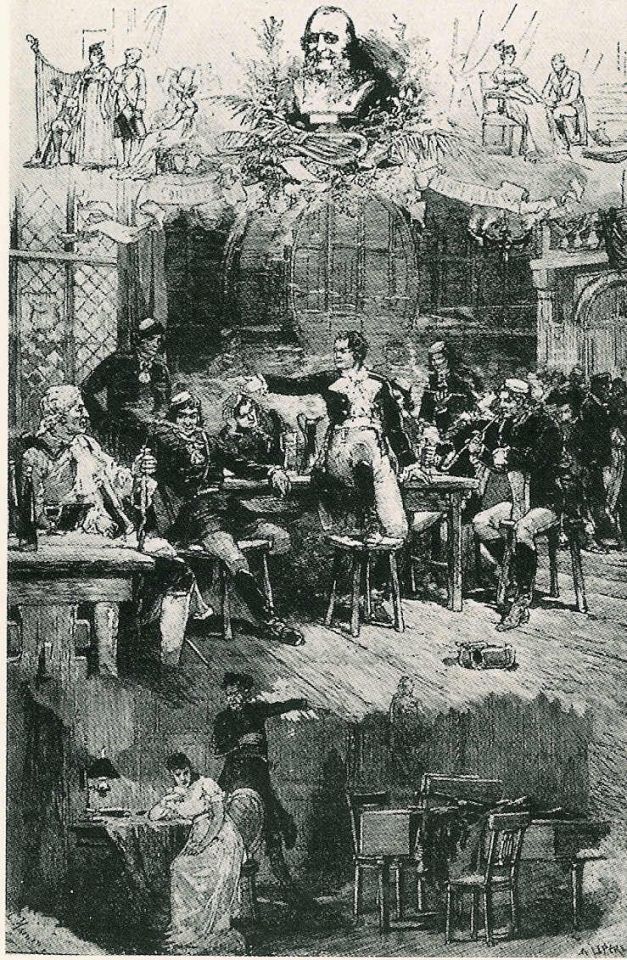
youtube
15 notes
·
View notes
Text
i’m fine i’m fine i’m fine <- lying
#opera tag#opera#les contes d'hoffmann#the tales of hoffmann#it’s already been kind of a shitty day and it’s not even noon yet. thanks work.#offenbach#jacques offenbach#Spotify
8 notes
·
View notes
Text
Coloratura Comparison! Four historic sopranos wind up Olympia's DOLL SONG, High E-flat THE SONGBIRDS: Aurelia Revy (1879 - 1957) was Hungarian and sang several seasons in London, Milan, Vienna, and Berlin.
THE MUSIC: Jacques Offenbach composed at least 100 works for the stage in the 34 years between 1847 and 1881. Yet only his masterpiece “Les Contes de Hoffmann” lives in the standard repertory, deservedly so. According to operabase.com, ��Hoffmann” is the second most performed French opera in the world, after “Carmen.” The first of three fantasy lovers that the poet Hoffmann conjures in the story is Olympia. Initially she appears luminous to Hoffmann, but she turns out to be a mechanical doll. She only has one aria in the opera, "Les oiseaux dans la charmille," commonly referred to as the Doll Song. And what an aria it is -- an extremely popular and challenging coloratura showpiece. This ditty is so ubiquitous that it’s easy to overlook how clever and original it is: Offenbach ingeniously composed an intricate and precise coloratura vocal line to convey Olympia's wind-up doll characteristics, all with a bit of a wink. It's inevitably a crowd pleaser for sopranos who can display their technique and have a little fun at the same time.
#classical music#opera#music history#bel canto#composer#classical composer#aria#classical studies#maestro#chest voice#Aurelia Revy#coloraura soprano#soprano#Les oiseaux dans la charmille#Doll Song#The Doll Song#The Tales of Hoffmann#Les contes d'Hoffmann#Jacques Offenbach#classical musician#classical musicians#classical history#historian of music#musician#musicians#history of music#diva#prima donna
6 notes
·
View notes
Text

Der aufmerksame Internettagebuchleser wundert sich wahrscheinlich, daß wir seit 4 Jahren kein einziges Les contes d'Hoffmann angeschaut haben. Noch nicht mal Powell & Pressburgers! Keine Ahnung, wie das passieren konnte. Die Met schafft Abhilfe, indem sie einmal wieder Bartlett Shers sagenhaft überkandidelte musenlastige Fiebertraum-Inszenierung überträgt, mit neuer Besetzung, allen voran der reizend verknautschte, aber stimmgewaltige Benjamin Bernheim, der viel geeigneter ist, den ja zumindest in Liebesdingen etwas verspulten Hoffmann zu geben als all diese drallen Heldentenöre, Vasilisa Berzhanskaya als für Rollen- und Met-Debut recht bestimmte Muse und der gutgelaunte Schurkendarsteller Christian (nicht zu verwechseln mit Daryl) Van Horn. Die Liebschaften sind auch alle ganz entzückend (wenngleich natürlich völlig ungeeignet und kreativitätshemmend) und es ist wunderbar. Man sollte das viel öfter anschauen.
#Les contes d'Hoffmann#Benjamin Bernheim#Vasilisa Berzhanskaya#Christian Van Horn#Erin Morley#Pretty Yende#Clémentine Margaine#Oper#Bartlett Sher#Jacques Offenbach#E. T. A. Hoffmann
0 notes
Text

untitled, after act one of offenbach’s les contes d'hoffmann
151 notes
·
View notes
Text
youtube
Barcarolle (Les Contes d'Hoffmann) J. Offenbach / E. Kimmel et A. Ugolin , D. Ciocarlie
5 notes
·
View notes
Text
Siena and her opera performances - a short character study
So, I thought I might share a short little analysis of the operas Siena performed, as I’ve not seen anything like this on here before and I’ve spent some time digging into those operas for my fanfics.
I want to post a whole character analysis of Siena at some point, but the operas play an important part in highlighting Siena’s character and her relationship with Anthony, so I thought it might be interesting to dig a bit deeper into those performances. Especially when it comes to a character like her (who barely got any screentime), those few seconds of her performing make a nice addition and add some depth to her character and storyline.
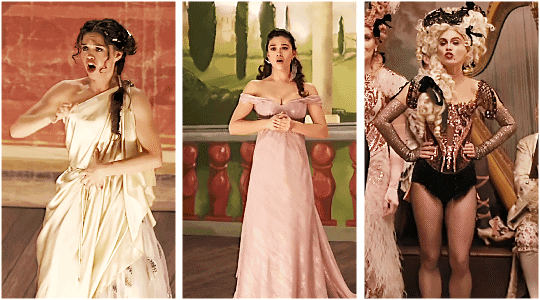
I won't focus much on the opera Siena performs in episode 1 – Gluck’s Iphigénie en Tauride – as it's not as interesting as the other two, because there doesn’t seem to be much of a connection to Siena’s character or her relationship with Anthony per se. Unlike the other operas, the focus in this scene is clearly not on her – she’s mostly just in the background, with two very short closeups, so we see that it’s her that is performing on stage. There is a deleted scene between her and Anthony according to the published script of that episode:
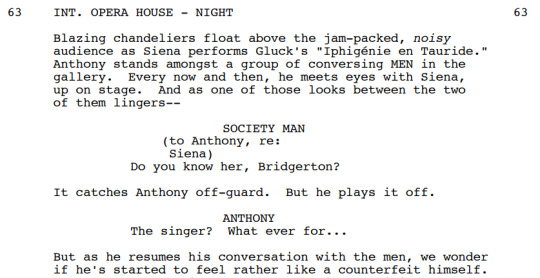
However, while I think that deleted scenes and such can make for interesting footnotes during an analysis/interpretation, I don’t like taking them too much into consideration – after all, there might be a good reason why this was deleted.
So the actual scene we see doesn’t really highlight anything in regards to Siena’s characters besides the fact that she’s an opera singer and that this is one of the only times we see her wear some brighter colors – while she’s on stage, playing a character. The other two operas she performs in episode 3 and 4 are much more focused on her character and storyline, especially her performance of I Capuleti e i Montecchi in 1.03 – this is the only time we see her perform without any of the other cast members present.
However, that’s not the only difference between Iphigénie en Tauride and the other operas. I Capuleti e i Montecchi and Les contes d'Hoffmann are also anachronistic. Iphigénie en Tauride premiered 1779, while I Capuleti e i Montecchi premiered in 1830 and Les contes d'Hoffmann in 1881.
People tend to make fun of historical inaccuracies or dismiss them as mistakes, but most times, anachronism is on purpose. I think it’s safe to assume that everyone working on this has been aware that those operas would not premiere until decades after season 1. The operas were clearly chosen for a reason.
Les contes d'Hoffmann by Jacques Offenbach (1881)
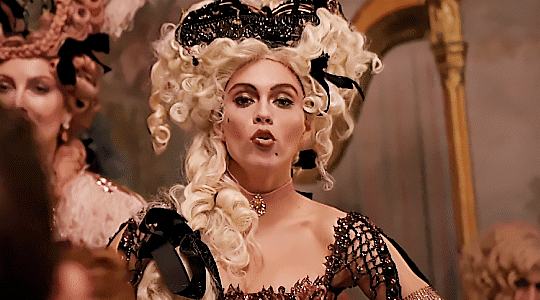
Les contes d’Hoffmann (The Tales of Hoffmann) tells the story of Hoffmann, who choses to give up on love and devotes his life to art and poetry instead. It's based on three short stories by E. T. A. Hoffmann, and some are probably familiar with the movie, but just to roughly summarize (also because there’s some important differences): At the beginning of the story, a prima donna named Stella invites Hoffmann to a meeting in her dressing room after her performance. Before the meeting, Hoffmann recounts his past great loves to his students. The opera consists of three acts, each telling the story of one of Hoffmann’s previous loves. After recollecting his stories of heartbreak, The Muse can convince Hoffmann to give his love to her (poetry) instead of visiting Stella.
There are many parallels to Siena and her relationship with Anthony here. The most obvious one is the prima donna part – Stella represents Siena. While there might not be direct similarities within the story or between Anthony and Hoffmann, the ending to Hoffmann’s story is still in some parts similar to Anthony’s. The opera ends with Hoffmann declaring that he doesn’t want to love anymore – which sounds quite similar to what Anthony says at the end of season 1.
Siena is obviously not performing the entire opera – we only see her sing “Belle nuit, ô nuit d'amour” as the courtesan Giulietta – who tries to fool Hoffmann into falling in love with her.
Storytelling-wise, it obviously does not fit Siena’s story at this point – she is not trying to fool Anthony into falling in love with her, quite the opposite. Though it does work well as a juxtaposition, especially when we see Siena noticing Anthony’s stares and she slips out of her role. There’s a clear contrast here between her performing as a devious courtesan and looking almost flustered as a result of Anthony’s gaze.
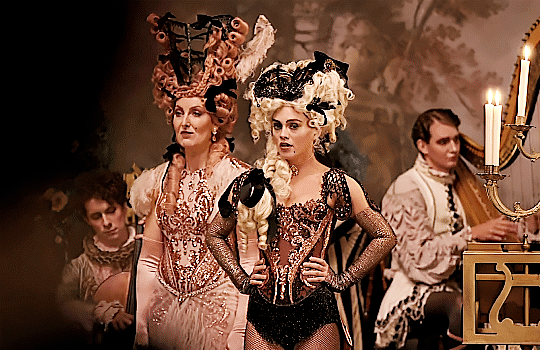
And although Siena at that point doesn’t want to seduce Anthony in any way, the piece still beautifully represents the actual scene that takes places here: Anthony longingly staring at her the very moment he recognizes her voice – almost as if under a spell (a very horny spell). Even when Violet tries to distract him, he cannot help but look in Siena’s direction. He’s completely enthralled by her here – similarly to how Hoffmann was enthralled by Giulietta. And similarly, both relationships are doomed to end unhappily.
Adding onto that, this is also the only time that we see Siena on stage where she represents exactly who she is: a courtesan. During the other two performances, she’s wearing bright, pastel gowns – very different from her usual style. The costume she wears here is also different from her usual style, which is fairly plain otherwise – but it does highlight the role she plays within society.
I find it quite interesting that this is the only time we see Anthony and Siena interact with one another during one of her performances – and one of the only times we see them interact in public altogether. This scene clearly shows the class difference between them: Anthony attending a ball as the lord he is, while Siena performs for everyone else’s entertainment, playing a seductive courtesan. They are present at the same place, yet they can’t talk to one another – there is an invisible wall between them which is highlighted by the positions they take within that scene as well as the clothes they wear. Had Siena performed any other part of that opera, she would probably have worn a pretty gown and those differences would not nearly be as noticeable. But she’s performing as a courtesan and as a result, this might be the most visible representation of her and Anthony’s differences and main conflict.
Returning to the actual story of the opera: At the end, Hoffmann explains how his three previous loves – Olympia, Antonia and Giulietta – all represent Stella. They show different aspects of the prima donna: the musician, the young girl and the courtesan. As I said, Stella represents Siena, and so do all of the other characters. In this scene, we see her visually represented as the courtesan. The show highlights this several times, especially during episode 3 when she talks to Genevieve and then later visits the gentlemen’s club and is inviting Simon to join her the next evening. Her need to find a keeper that can protect her and provide for her plays an essential role within her storyline.
Then, she’s obviously also a musician – a good amount of her scenes consist of her performances, and her character is defined by those performances. And, in the end, she’s also a young girl – and the show ensures to highlight that part as well. Through showcasing her vulnerability and emotions, we can see that she is not that different from the other young women in the show, like Daphne and Marina. They are all young, dealing with heartbreak and making decisions to secure their future. And this is in my opinion what sets Bridgerton apart from other stories of its genre. Usually, a character like Siena would only be the musician and courtesan – either sidelined or vilified. The show humanizes her, however, by granting her screentime to show her pain and struggles and even, to some extent, her innocence – which is especially well done during her performance in 1.03.
I Capuleti e i Montecchi by Vincenzo Bellini (1830)
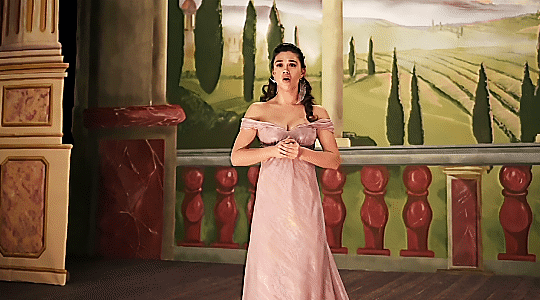
As you can probably guess by the title, I Capuleti e i Montecchi tells the story of Romeo and Juliet. I don’t think there’s a need to summarize the story, and I also think it’s pretty clear why this particular opera was chosen: Romeo and Juliet originated the star-crossed lovers trope – which is the exact trope Siena and Anthony would fall under.
There are many things I love about that scene – it’s just all around a brilliant scene, not just in relation to Siena’s character. Though I will obviously only focus on how it relates to her character here.
The aria Siena performs is “Oh! quante volte” – Juliet waiting for Romeo, begging for him to come for her. It’s quite emotional and allows for Siena’s character to express her own emotions throughout her performance.
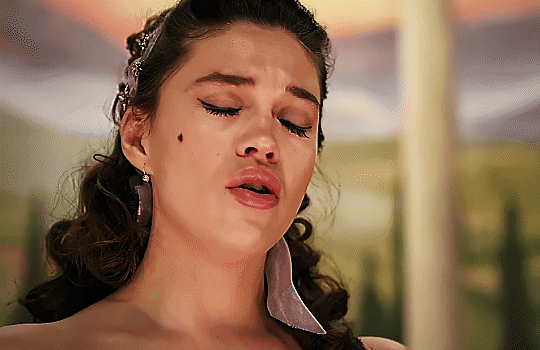
First, I adore how beautifully this ties in with the next scene. For one, because it sets up the atmosphere and essence of Siena and Anthony’s relationship – the tragedy of it all. The scene with Anthony in Siena’s dressing room underlines how this is not meant to be a love story with a happy ending, and the performance right before that amplifies this. Their story is doomed to end unhappily. And, similar to Romeo and Juliet, it is not merely a tragic story about love – it’s a story about the dangers of defying societal norms and duties and your own identities within that society.
But the dressing room scene also shows the clear differences between both stories. When Anthony visits her, Siena choses to reject him. She might have been emotional during her performance, but when Anthony showed his face, Siena did not act based on emotions but was very much rational in her words and actions. Because Anthony is not Romeo, and Siena is also not Juliet.
I also love how this performance builds a beautiful contrast to Les contes d'Hoffmann. Instead of a courtesan, Siena is playing an ingenue, wearing a pretty gown and looking all around sweet and innocent.
As the opera is in Italian, Juliet is obviously called Giulietta – just like the courtesan from Les contes d'Hoffmann. I have no idea whether this has been an accident or was done on purpose, but it’s a wonderful parallel. In both operas, she’s playing two very different women who happen to share the same name.
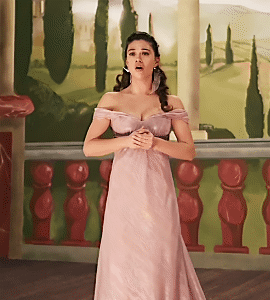
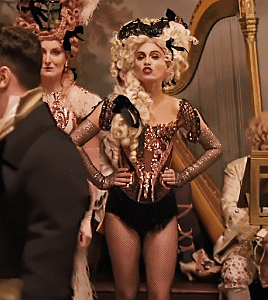
It underlines the differences between both roles but also draws a connection – which is Siena’s character.
By society, Siena is seen as the Giulietta from Les contes d'Hoffmann: the courtesan whose intentions are dubious and malicious. When Siena performs as I Capuleti e i Montecchi’s Giulietta, we can see a more vulnerable side of her as she openly cries on stage. We see her heartbroken and emotional, letting her guard down completely for a moment. In the end, it’s merely a performance. But Siena uses this performance to allow herself vulnerability – a vulnerability she is not usually allowed.
Those different performances do an excellent job at showcasing Siena’s character and also her main conflict and the different roles she plays. The chosen operas add some wonderful depth and insight into her character and I absolutely love how the shows has implemented them.
#bridgerton#siena rosso#anthony x siena#i have so many notes for analyses saved especially about siena#one day i will hopefully post that whole character study#also really want to do an analysis of the parallels between her and daphne and marina during season one#and i kinda want to dig a bit deeper into those operas too#there's definitely a lot more to focus on here#but i always need some time to actually write meta posts because I'm honestly fine just thinking about that stuff for myself#but sharing is fun too and makes for great discussions so i'm trying to post more#meta
22 notes
·
View notes
Text
btw if you live near a theater that does the met opera cinecasts tomorrow is les contes d'hoffmann by jacques offenbach!!!!!
8 notes
·
View notes
Text
The Top 40 Most Popular Operas, Part 3 (#21 through #30)
A quick guide for newcomers to the genre, with links to online video recordings of complete performances, with English subtitles whenever possible.
Verdi's Il Trovatore
The second of Verdi's three great "middle period" tragedies (the other two being Rigoletto and La Traviata): a grand melodrama filled with famous melodies.
Studio film, 1957 (Mario del Monaco, Leyla Gencer, Ettore Bastianini, Fedora Barbieri; conducted by Fernando Previtali) (no subtitles; read the libretto in English translation here)
Donizetti's Lucia di Lammermoor
The most famous tragic opera in the bel canto style, based on Sir Walter Scott's novel The Bride of Lammermoor, and featuring opera's most famous "mad scene."
Studio film, 1971 (Anna Moffo, Lajos Kozma, Giulio Fioravanti, Paolo Washington; conducted by Carlo Felice Cillario)
Leoncavallo's Pagliacci
The most famous example of verismo opera: brutal Italian realism from the turn of the 20th century. Jealousy, adultery, and violence among a troupe of traveling clowns.
Feature film, 1983 (Plácido Domingo, Teresa Stratas, Juan Pons, Alberto Rinaldi; conducted by Georges Prêtre)
Part I, Part II, Part III, Part IV, Part V, Part VI
Mozart's Die Entführung aus dem Serail (The Abduction from the Seraglio)
Mozart's comic Singspiel (German opera with spoken dialogue) set amid a Turkish harem. What it lacks in political correctness it makes up for in outstanding music.
Royal Opera House, Covent Garden, 1988 (Deon van der Walt, Inga Nielsen, Lillian Watson, Lars Magnusson, Kurt Moll, Oliver Tobias; conducted by Georg Solti) (click CC for subtitles)
Verdi's Un Ballo in Maschera
A Verdi tragedy of forbidden love and political intrigue, inspired by the assassination of King Gustav III of Sweden.
Leipzig Opera House, 2006 (Massimiliano Pisapia, Chiara Taigi, Franco Vassallo, Annamaria Chiuri, Eun Yee You; conducted by Riccardo Chailly) (click CC for subtitles)
Part I, Part II
Offenbach's Les Contes d'Hoffmann (The Tales of Hoffmann)
A half-comic, half-tragic fantasy opera based on the writings of E.T.A. Hoffmann, in which the author becomes the protagonist of his own stories of ill-fated love.
Opéra de Monte-Carlo, 2018 (Juan Diego Flórez, Olga Peretyatko, Nicolas Courjal, Sophie Marilley; conducted by Jacques Lacombe) (click CC and choose English in "Auto-translate" under "Settings" for subtitles)
Wagner's Der Fliegende Holländer (The Flying Dutchman)
An early and particularly accessible work of Wagner, based on the legend of a phantom ship doomed to sail the seas until its captain finds a faithful bride.
Savolinna Opera, 1989 (Franz Grundheber, Hildegard Behrens, Ramiro Sirkiä, Matti Salminen; conducted by Leif Segerstam) (click CC for subtitles)
Mascagni's Cavalleria Rusticana
A one-act drama of adultery and scorned love among Sicilian peasants, second only to Pagliacci (with which it's often paired in a double bill) as the most famous verismo opera.
St. Petersburg Opera, 2012 (Fyodor Ataskevich, Iréne Theorin, Nikolay Kopylov, Ekaterina Egorova, Nina Romanova; conducted by Mikhail Tatarnikov)
Verdi's Falstaff
Verdi's final opera, a "mighty burst of laughter" based on Shakespeare's comedy The Merry Wives of Windsor.
Studio film, 1979 (Gabriel Bacquier, Karan Armstrong, Richard Stilwell, Marta Szirmay, Jutta Renate Ihloff, Max René Cosotti; conducted by Georg Solti) (click CC for subtitles)
Verdi's Otello (Othello)
Verdi's second-to-last great Shakespearean opera, based on the tragedy of the Moor of Venice.
Teatro alla Scala, 2001 (Plácido Domingo, Leo Nucci, Barbara Frittoli; conducted by Riccardo Muti)
#opera#top 40#21 through 30#video#complete performances#english subtitles#il trovatore#lucia di lammermoor#pagliacci#die entfuhrung aus dem serail#the abduction from the seraglio#un ballo in maschera#les contes d'hoffmann#the tales of hoffmann#der fliegende holländer#the flying dutchman#cavalleria rusticana#falstaff#otello
27 notes
·
View notes
Text
The Library Of Easy Piano Classics, Vol.1 & 2
The Library Of Easy Piano Classics, Vol.1:Best Sheet Music download from our Library.The Library Of Easy Piano Classics, Vol.2:Please, subscribe to our Library. Thank you!
The Library Of Easy Piano Classics, Vol.1:

Contents: The Library Of Easy Piano Classics, Vol.1Download - Butterfly - Rameau: Le Tambourin - Georg Friedrich Händel: Air And Variations - Georg Friedrich Händel: Air - Scriabin: Album Leaf - Wolfgang Amadeus Mozart: Alla Turca Turkish March - Edvard Grieg: Anitra'S Dance Peer Gynt Suite Op.46 No.1 - Ludwig van Beethoven: Bagatelle - Jacques Offenbach: Barcarolle Les Contes D'Hoffmann - Pyotr Ilyich Tchaikovsky: Capriccio Italienne Op.45 - Claude Debussy: Deux Arabesques - Ludwig van Beethoven: Ecossaise - Frédéric Chopin: Fantasie Impromptu - Wolfgang Amadeus Mozart: Fantasy In D Minor - Johann Sebastian Bach: Four Pieces From The Little Notebook - Ludwig van Beethoven: Fur Elise Bagatelle In A Minor Woo 59 - Franz Joseph Haydn: Gipsy Rondo - Claude Debussy: Golliwogg'S Cakewalk - Dmitri Kabalevsky: Having Fun - Edvard Grieg: Humerosque - Antonin Dvorák: Humoresque - Johannes Brahms: Hungarian Dance - Franz Liszt: Hungarian Rhapsody No.1 - Claude Debussy: La Fille Aux Cheveux De Lin - Georg Friedrich Händel: Largo - Louis-Claude Daquin: Le Coucou - Franz Liszt: Liebestraum - Isaac Albéniz: Malaguena - Franz Schubert: March Militaire - Frédéric Chopin: Mazurka In B Flat - Claude Debussy: Minstrels - Minuet Blavet - Ludwig van Beethoven: Minuet In G - Franz Schubert: Moment Musicale Op.94 No.3 - Ludwig van Beethoven: Moonlight Sonata Op.27 No.2 - Fauré: Nocturne - Nocturne In E Flat Op.9 No.2 - Frédéric Chopin: Nocturne Op. 72 No. 1 - Sergei Prokofiev: Peter And The Wolf - Zdenek Fibich: Poem - Dimitri Shostakovich: Polka - Bach: Prelude And Fugue Book 1. No 2 - Bach: Prelude And Fugue Book 2 No. 12 - Frédéric Chopin: Prelude In A Op.28 No.7 - Frédéric Chopin: Prelude In B Minor Op.28 No.6 - Sergei Rachmaninov: Prelude - Bach: Prlude No. 1 - Rondinio Field - Ludwig van Beethoven: Rondo A Capriccio In G Op.129 - Hummel: Rondo - Wolfgang Amadeus Mozart: Rondo In D - Aram Il'yich Khachaturian: Saber Dance - Franz Schubert: Serenade - Ludwig van Beethoven: Six Variations - Franz Joseph Haydn: Sonata In D Major - Wolfgang Amadeus Mozart: Sonata K 543 - Sonate Au Clair De Lune Moonlight Sonata - Nicolay Rimsky-Korsakov: Song Of India Sadko - Isaac Albéniz: Tango - Johann Strauss Jr.: The Blue Danube Waltz Op.314 - Scott Joplin: The Cascades - Franck: The Doll's Complaint - Robert Schumann: The Happy Farmer Op.68 No.10 Album For The Young - Claude Debussy: The Little Negro - Anatol Lyadov: The Music Box - Edward MacDowell: To A Wild Rose Woodland Sketches Op.51 - Traumerei Kinderscenen Op.15 No.7 - Erik Satie: Trois Gnossiennes - Frédéric Chopin: Valse - Johannes Brahms: Waltz In A Flat Op.39 No.15 - Frédéric Chopin: Waltz In C Sharp Minor Op.64 No.2 - Carl Maria von Weber: Waltz
The Library Of Easy Piano Classics, Vol.2:

Contents: The Library Of Easy Piano Classics Vol 2Download - 1812 Overture op49 (Tschaikowsky, Peter Iljitsch) - Air (Bach, Wilhelm Friedemann) - Allegretto Scherzando (Bach, Carl Philipp Emanuel) - American The Beautiful (Ward, Samuel A.) - Anitra's Dance (Peer Gynt Suite op46,1) (Grieg, Edvard) - Aria (Verdi, Giuseppe) - Arietta - Prelude No1 In C From The Well-tempered Clavier (Js, Bach) - Ave Verum Corpus K.618 - Allegretto Scherzando (Cpe Bach) - Air (Wf Bach) - Bell Song From Lakme - Minuet In G - Sympathy No7 - Sympathy No 7 - Sympathy No3 'Eroica' - Sympathy No 6 'Pastoral' - Theme From Variations On A Theme From Paisello's La Molinara - Piano Concerto No4 - Ecossaises - Minuet Op 49 No 2 - Farandolce From L'Arlesienne Suite No2 - Hungarian Dance No 4 - Hungarian Dance No 6 - Lullaby - Waltz - Prelude Op 28 No 4 - Gavotte - Waltz Op 18 - Waltz Op 34 No 1 - Waltz Op 64 No 2 - Waltz Op 69 No 2 - Nocturne Op 9 No 2 - Polonaise Op 40 No 1 - Polonaise Op 53 - Fantasy Impromptu Op 66 - Funeral March From Sonata - Sonatina - Reverie - Bell Song From Lakme - Pizzicati From Sylvia - Slavonic Dance No 10 - Melody - Jeanie With The Light Brown Hair (Foster) - Mighty Lak A Rose (Nevin) - Entry Of The Gladiators - Waltz Fromfaust - Anitras Dance From Peer Gynt - Minuet - Piano Concerto - Bouree - Gavotte - Minuet No 1 - Bouree From Music Of The Royal Fireworks - German Dance - Saint Anthony Chorale - Gypsy Love Song (Herbert) - My Herat At Thy Sweet Voice (Samson And Delilah) - Danube Waves - Parade Of The Tin Soldiers - Maple Leaf Rag (Joplin) - Over The Waves - Parade Of The Tin Soldiers - Four Scottish Dances - Les Preludes - Fascination - Nocturne - Fingal's Cave (Mendelsshon) - Theme - Piano Concerto In C - Minuet From Don Giovanni - Minuet In F - Minuet - Ave Verum - Romance From Eine Kleine Nachtmusik - Rondo - Romance From Piano Concerto No 20 - Arietta - Menuetto - Sailor's Dance (Dido And Aeneas) - Mighty Lak A Rose (Nevin) - Caprice No 24 - The Whistler And His Dog - Themes From Madame Butterfly - Solvejg's Song - Sailors Dance - Rondeau - Minuet - Over The Waves - My Heart At Thy Sweet Voice (Saint Saens) - Minuet (Scarlatti) - Sympathy No 7 - Trout Quintet - Impromptu - Moment Musicale - Sympathy No 9 - Piano Trio In E Flat - The Happy Farmer - Blindmans Buff - Melody - Slumber Song - Traumerei - Canon (Sciabin) - The Stars And Stripes Foreveer - The Washington Post - Emperor Waltz - Tritsch Tratsch Polka - Vienna Blood - Wine Women And Song - I Am The Very Model Of A Modern Major General (Sullivan) - Themes From Madame Butterfly - Morning Prayer - Waltz - Waltz In E Flat - Tritsch Tratsch Polka - Sympathy No 5 - Sympathy No 6 - March From The Nutcracker - Waltz Of The Flower - 1812 Overture - Chanson Triste - Battle Hymn Of The Republic (Traditional American Hymn) - Waltz (Schlubert) - Waltz In A Flat Op.34 No.1 - Red River Valley (Traditional American Song) - Waltz In C Sharp Minor Op.64 No.2 - Chicken Reel (Traditional American Fiddle Tune) - Waltz In E Flat - Good King Wenceslas (Traditional English Carol) - Prayer Of Thanksgiving (Traditional Netherlands Hymn) - Auldlang Syne (Traditional Scottish Air) - Aria - Evening Star - Wine Women And Song - The Band Played On - American The Beautiful Read the full article
#SMLPDF#noten#partitura#sheetmusicdownload#sheetmusicscoredownloadpartiturapartitionspartitinoten楽譜망할음악ноты
2 notes
·
View notes
Video
youtube
Anna Netrebko & Elīna Garanča – Offenbach: Les Contes d'Hoffmann: Barcar...
3 notes
·
View notes
Note
∞
you get “ta mère! oses-tu l’invoquer?” from offenbach’s les contes d’hoffmann!
“Chère enfant que j'appelle
Comme autrefois, c'est ta mère, c'est elle!
entends sa voix!”
[“Dear child whom I call
as I once did, it is your mother, it is her!
Listen to her voice!”]
#opera tag#opera#opera asks#asks#les contes d'hoffmann#the tales of hoffmann#offenbach#jacques offenbach
4 notes
·
View notes
Text
Coloratura Comparison! Four historic sopranos wind up Olympia's DOLL SONG, High E-flat THE SONGBIRDS: - Luise Szabo (1904 - 1934) was born in Budapest and made her debut there in 1927. She sang Queen of the Night in both Berlin and Amsterdam in 1931. Szabo died when she was only 30 years old during a medical operation in Budapest. THE MUSIC: Jacques Offenbach composed at least 100 works for the stage in the 34 years between 1847 and 1881. Yet only his masterpiece “Les Contes de Hoffmann” lives in the standard repertory, deservedly so. According to operabase.com, “Hoffmann” is the second most performed French opera in the world, after “Carmen.” The first of three fantasy lovers that the poet Hoffmann conjures in the story is Olympia. Initially she appears luminous to Hoffmann, but she turns out to be a mechanical doll. She only has one aria in the opera, "Les oiseaux dans la charmille," commonly referred to as the Doll Song. And what an aria it is -- an extremely popular and challenging coloratura showpiece. This ditty is so ubiquitous that it’s easy to overlook how clever and original it is: Offenbach ingeniously composed an intricate and precise coloratura vocal line to convey Olympia's wind-up doll characteristics, all with a bit of a wink. It's inevitably a crowd pleaser for sopranos who can display their technique and have a little fun at the same time.
#classical music#opera#music history#bel canto#composer#classical composer#aria#classical studies#maestro#chest voice#Luise Szabo#Luise Szabó#coloratura soprano#soprano#The Tales of Hoffmann#Les contes d'Hoffmann#Jacques Offenbach#Les oiseaux dans la charmille#Doll Song#The Doll Song#classical musician#classical musicians#classical history#history of music#historian of music#musicians#musician#diva#prima donna
2 notes
·
View notes
Photo

Jacques Offenbach
Jacques Offenbach (1819-1880) était un compositeur d'origine allemande qui prit la nationalité française et devint célèbre à Paris pour ses opérettes comiques, un genre qu'il créa, et pour l'opéra plus sérieux Les Contes d'Hoffmann. Violoncelliste virtuose, chef d'orchestre et compositeur prolifique d'œuvres scéniques, Offenbach connut une immense popularité dans toute l'Europe au cours des années 1860.
Lire la suite...
2 notes
·
View notes